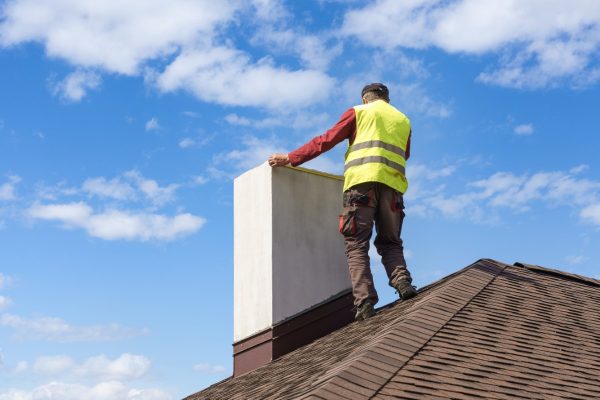Chimneys have long been iconic features of residential architecture, serving both functional and aesthetic purposes. Whether venting a cozy fireplace or acting as part of a home’s heating system, the chimney is an essential structure that often goes overlooked—until problems arise. While the exterior might seem durable and weather-resistant, the reality is that masonry, like any other building material, degrades over time. Among the most critical maintenance tasks is chimney repointing, a process that preserves both the safety and longevity of your chimney system.
The mortar joints between bricks or stones play a crucial role in the stability of a chimney. Over time, exposure to the elements—especially wind, rain, snow, and temperature fluctuations—can wear down this mortar. When that happens, it not only compromises the chimney’s appearance but also its function and structural integrity. Understanding the importance of chimney repointing helps homeowners make informed decisions that prevent costly repairs and protect the home’s value.
In this article, we’ll explore what chimney repointing is, why it’s necessary, how it benefits your property, and what signs indicate it’s time to call in a professional.
What Is Chimney Repointing?
Chimney repointing is the process of renewing the external part of mortar joints in a masonry chimney. Mortar is the substance that holds bricks or stones together, and over time it can deteriorate due to weathering and movement. When the mortar becomes weak or starts to crumble, it can no longer support the bricks adequately. This leads to moisture penetration, structural weakness, and eventual collapse if left untreated.
Repointing involves carefully removing the damaged mortar to a certain depth and replacing it with new, fresh mortar that matches the original in composition and appearance. This ensures the chimney remains strong and continues to resist moisture and other environmental pressures.
Proper repointing is a skilled trade that requires precision. Simply applying new mortar over the old (a process known as “tuckpointing” when done incorrectly) may improve appearance temporarily, but it doesn’t resolve the underlying issues. That’s why professional chimney repointing is considered a necessary part of long-term masonry care.
Why Mortar Fails Over Time
Even if bricks or stones appear sturdy, the mortar that binds them is usually the weakest point in a masonry structure. Mortar is porous, which means it absorbs water. When temperatures drop, this moisture can freeze and expand, causing the mortar to crack and eventually flake away.
Other causes of mortar deterioration include:
- Acid rain and air pollution, which can chemically break down mortar compounds.
- Settling and shifting foundations, which put stress on chimney structures.
- Poor installation or mismatched materials during the original build.
- Lack of maintenance, allowing small cracks to grow larger over time.
As the mortar weakens, the chimney becomes increasingly vulnerable to moisture intrusion, which can damage internal flue liners, ceilings, and even nearby walls. In serious cases, a neglected chimney can collapse, becoming a safety hazard and resulting in expensive emergency repairs.
The Dangers of Ignoring Damaged Mortar
Homeowners often overlook chimney maintenance because it seems like a purely cosmetic feature of the home. However, failing to address deteriorating mortar can have serious consequences beyond appearance.
Here are some of the risks associated with neglecting chimney repointing:
1. Water Damage
As cracks form and mortar crumbles, water begins to seep into the chimney structure. Moisture not only weakens bricks further but can also travel into the attic, ceilings, or interior walls, causing rot, mold, and staining.
2. Heat and Smoke Leaks
A compromised chimney allows heat, smoke, and harmful gases like carbon monoxide to escape into areas of the home where they shouldn’t be. This can put your family’s safety at risk.
3. Brick Displacement
Without solid mortar to hold them in place, bricks may shift, crack, or fall. Over time, this can result in partial or complete chimney collapse—especially during strong winds or seismic activity.
4. Decreased Energy Efficiency
Chimneys play a part in your home’s insulation and airflow regulation. Gaps or cracks reduce thermal efficiency, meaning higher heating and cooling bills throughout the year.
Timely chimney repointing not only eliminates these risks but restores the structural strength of your chimney, making it safe and functional for years to come.
Signs That Your Chimney Needs Repointing
Not every homeowner climbs onto their roof to inspect their chimney regularly, but there are several visible and indirect signs that mortar failure might be happening:
- Cracked, crumbling, or missing mortar between bricks
- Loose or shifting bricks
- White stains on the exterior brick (efflorescence from water intrusion)
- Spalling (bricks flaking or falling apart)
- Leaks or moisture stains in the attic or near the fireplace
- Deterioration of the chimney crown or flashing
If you observe any of these symptoms, it’s time to consider an inspection and possible chimney repointing by a qualified mason.
Benefits of Professional Chimney Repointing
Hiring an expert to repoint your chimney offers numerous advantages that extend far beyond appearance. Here’s what professional service brings to the table:
1. Improved Structural Integrity
The main goal of repointing is to restore the chimney’s strength. When mortar is fresh and correctly installed, it locks bricks into place, resists external pressure, and stands firm against harsh weather.
2. Extended Lifespan
Regular maintenance and timely repairs can significantly extend the life of your chimney. A repointed chimney can last decades longer than one that’s left to deteriorate.
3. Moisture Prevention
Fresh mortar repels water more effectively, helping to keep both the chimney and your home dry. Proper repointing also protects against freeze-thaw cycles that degrade masonry.
4. Enhanced Property Value
A well-maintained chimney adds to curb appeal and market value. If you’re planning to sell your home, a structurally sound chimney will pass inspection and attract more confident buyers.
5. Energy Savings
By sealing off air leaks and improving insulation, chimney repointing can indirectly lower energy bills, especially in colder climates.
What to Expect During the Repointing Process
Understanding what happens during chimney repointing can help homeowners know what to expect and why it’s worth the investment. A typical project involves:
- Assessment and Inspection: A qualified mason inspects the chimney to identify damaged areas and determine the depth of deterioration.
- Mortar Removal: Old, loose, or crumbling mortar is carefully ground or chiseled out to a uniform depth—usually around ½ to ¾ of an inch.
- Surface Preparation: Dust and debris are removed from the joints to allow for better adhesion of new mortar.
- Mixing and Matching: Mortar is mixed to match the existing material in color, texture, and composition.
- Application: New mortar is applied in layers, packed tightly into the joints, and shaped to ensure water runs off rather than pooling.
- Curing: The mortar is allowed to dry and cure properly, usually over several days, depending on weather conditions.
A reputable contractor will also clean the chimney’s exterior and may recommend additional waterproofing for long-term protection.
How Often Should You Repoint a Chimney?
There’s no universal timeline for chimney repointing, as it depends on factors such as climate, chimney height, exposure to weather, and the quality of the original construction. However, most masonry chimneys need repointing every 20–30 years.
Regular inspections—every few years—are key to catching deterioration early. This is particularly important if your chimney is older, exposed to high winds, or located in an area with extreme temperature swings.
Final Thoughts
The chimney is one of the most exposed parts of a home and also one of the most essential. While bricks and stones may last a century or more, the mortar that binds them requires periodic maintenance to preserve safety and appearance. Chimney repointing is a cost-effective and highly beneficial way to ensure your chimney continues to perform its function safely and efficiently.
By investing in proper maintenance, including professional chimney repointing, homeowners can prevent serious issues like water damage, structural instability, and energy inefficiency. It’s a proactive step that protects your investment, improves your home’s value, and ensures peace of mind for years to come.
If your chimney is showing signs of age or wear, don’t wait for bigger problems to surface. Schedule a professional inspection and consider whether chimney repointing could be the solution your home needs.



























